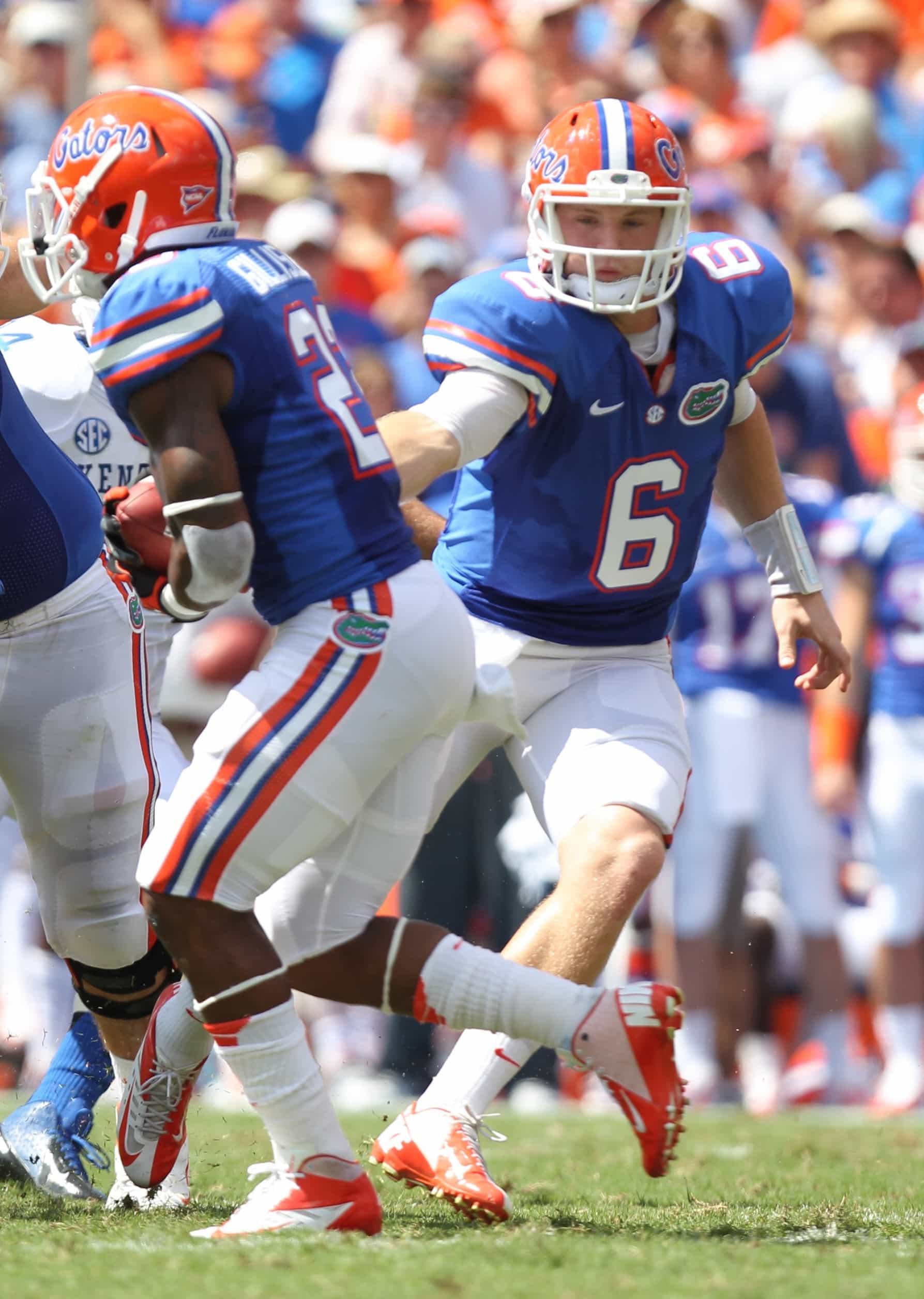Two things stood out to Nick and I when we re-watched the Texas A&M game from 2012. The first thing was the number three, three penalties that is.
Florida was a team coming off of a game where they were penalized 14 times in the season opener at home. This was the time when a hostile environment should get to them, an overbearing heat should get to them, and a quarterback that seemed to love getting sacked should frustrate them and cause emotions to boil over. Those things didn’t happen.
Instead, Florida turned in its most disciplined performance of the season from a temperament standpoint, keeping calm in the face of immense pressure and there’s something to be said for that.
Jeff Driskel recently attended the Manning passing camp, hopefully while he was there Peyton Manning taught him a thing or two about how to execute a play action fake convincingly, because that’s the second thing that stands out to me.
On bootlegs, he seems more worried about getting his head around to see the defender than delivering a convincing fake handoff. On simple play actions, he seems too eager to lock on his primary read than sticking it into his running back’s belly.
On one play, the bad fake bites Driskel in the keister, when we compare that to another instance later in the game, we see how much the difference between effective and lazy really is.
With 5:05 left to go in the second quarter, Florida runs a play that should have worked perfectly. Not only is it a play action fake, but the blocking scheme is designed to look like a running play that Florida runs pretty well. Guard Jon Halapio pulls down the line to make the defense think the play is “power left”—the play Florida ran to the right two plays earlier. Hunter Joyer even feigns like he’s leading through a hole before stopping to pass block.
The blocking scheme is designed to make the defense make an instinctive read of run instead of pass, take one step out of position so that a receiver can burn them. That’s all it takes. One problem: Driskel’s play fake is lazy. He retracts the ball before even giving himself the chance to fake out the defense. It doesn’t even halfway make a defender think he maybe gave it to the running back. It’s presumably because he’s so worried about the defensive coverage and making his read that the fake is something he isn’t focused on. Whatever the reason for the bad fake, the defense isn’t fooled, coverage holds strong and Driskel ends up taking a sack instead of throwing the ball away. An effective play fake could have changed the outcome of that play.
What’s the difference between an effective play fake and a lazy one? Ask A&M safety Steven Campbell.
In the fourth quarter, down four points, the Gators lined up in the shotgun. Driskel receives the snap and fakes a handoff to Mike Gillislee, simulating a read option play. It isn’t a great play fake, but it’s just good enough to get Campbell to take a half step up out of position. Florida running back Omarius Hines uses that to his advantage, and Campbell has put himself at a disadvantageous position, there’s space behind him now. Hines gains a step on Campbell and Driskel steps up in the pocket to throw a beautiful pass to Hines. It turns into a 39-yard gain, and sets up Florida for the go-ahead score. It’s arguably the play of the game.
Two plays later, Gillislee tightropes down the sideline to give Florida a lead it wouldn’t give back, and the Gators spoil what ended up being a sour debut for the future Heisman trophy winner, Johnny Manziel.
Subtracting Driskel’s sack yardage from the failed fake, the difference between an effective play fake and a lazy one is 42 yards, and maybe even a massive win in College Station.



Nice analysis, Richard. The play fake should be a staple for us – especially with our effective run game. I remember a few years ago when Auburn won the Nat’l Championship with Cam, and his play fakes were excellent.
Cam and that Auburn team ran a different kind of offense than what Florida is trying to run. Watch Alabama, McCarron is one of the best with his play-action. That’s the offense Florida is trying to emulate IMO.